11 October 2013
In response to great demand, we have decided to publish on our site the long and extraordinary interviews that appeared in the print magazine from 2009 to 2011. Forty gripping conversations with the protagonists of contemporary art, design and architecture. Once a week, an appointment not to be missed. A real treat. Today it’s Alberto Tadiello’s turn.
Klat #01, winter 2009-2010.
Mountain climber, mason and musician, Alberto Tadiello is also the winner of the latest edition of the Premio Furla. Over the last two years he has convinced audiences and critics with his elegant, powerful works, that combine fascination with nature and an interest in science. From Chiampo, in the foothills of the “Little Dolomites”, through Venice, Milan and then Paris, one of the most brilliant Italian artists of the latest generation is now ready to meet the exciting challenges of London and New York, and to respond to the questions posed by KLAT…
Let’s start at the beginning. You once told me the work that satisfies you most, the one you feel is most complete, is RMN, made in 2005 for the RMN Sound Event at Galleria A+A in Venice. Looking at your career thus far, and in the light of the acceleration of the last year, I’d like to explore the reasons behind your attachment to this work from four years ago, when you were still a student at the IUAV.
RMN is still very important to me. I see it as the first work, perhaps also the most naive, precisely because it contained this thrust, this amazing desire to come to grips with a completely empty space. It’s a work that functions very well, above all for me. I had just started to live on my own in Venice, outside the family setting, and RMN had to do with that context. It came from reflection on the phenomenon of the tides and the gravitational pull of the moon, these enormous movements of water. It was very evocative.
But extremely terse.
There was also an autobiographical side. In that period I had begun to have violently painful cluster headaches. I was alone, in a new city, enjoying a sort of independence. But at the same time, I was faced with an environment like that of the hospital, with its own images and sounds. So my thinking started to combine all these elements and I realized that what I was looking for in books and magazines, and in my general observations, was precisely the ability to group and unite different aspects in a single work.
I am struck by three characteristics you have mentioned. The first is the a posteriori assessment of the naiveté of the work. The second is its relationship with a personal desire. The third is the autobiographical aspect. In particular, the latter interests me because it is something that seems to have been filtered out of your work, of your approach to works and to art and its system in general. So I wonder if you consider RMN naive because of the presence of this autobiographical factor.
Actually, my reasoning is quite distant from the autobiographical aspect, and this detachment gives me the possibility of looking more closely at things, of observing them. Mountain climbing or my experience as a mason, for example, represent parallel universes I often use as a source of images and suggestions, but they do not intervene directly in the work. RMN had a strong component of urgency, necessity, desire, as I said. In any case, I think it is a very economical, complete, dialectic work.
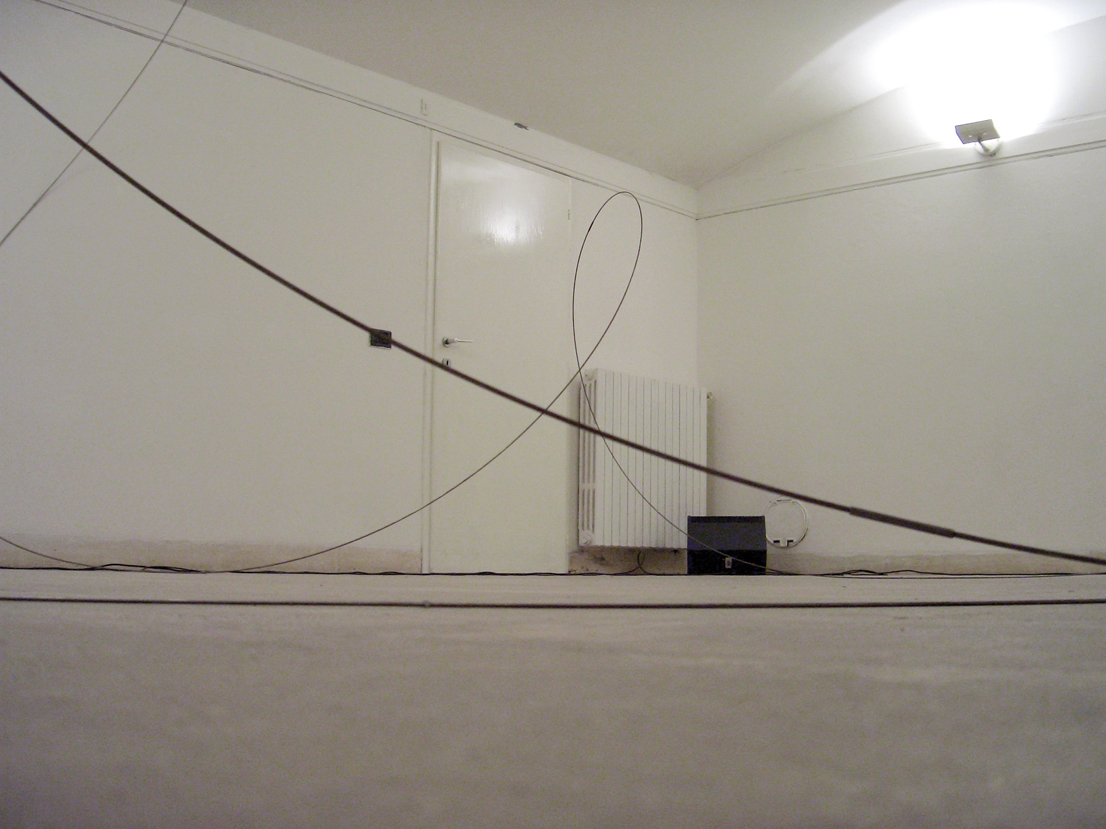
Alberto Tadiello, RMN, 2005. Courtesy: T293, Napoli.
Though I did not see it installed, I can sense that it deftly balanced two necessities: the physical need to occupy the space of the gallery with something that would not be monumental, and the need for graphic representation, of sign and design, that are always there in your works. The physical aspect was also supported by the use of sound, an invisible plastic material…
… which was not even sound, but a true vibration…
… generated by loudspeakers.
The subwoofers installed in the corners of the exhibition space created this vibration, generating ephemeral volumes, zones where the effect was more or less intense. I was interested precisely in this extremely physical dimension you perceived only with the body, though it was impalpable, intangible, inappropriable. You just absorbed it when you passed.
When did you begin to be interested in sound waves and vibrations, a major factor in your work?
To start at the beginning, with a cultural background of a scholastic type, my references would be Yves Klein or Mark Rothko. Where sound is concerned, I was definitely influenced by the compositions of Giacinto Scelsi. I greatly admired these artists and their works. They were capable of being extremely evocative through the simplicity of chromatic vibration, of a minor variation of two colors, of one color, that could transport you, sweep you away…
… sublimating experience…
Yes. So I went forward from there, I studied music, I listened to all kinds of different things. I began to be fascinated by the bare aspects of sound, errors, discarded things, hiss, noises, vibrations, all those components that are part of the functioning of things and determine their nature, their mechanisms.
The effects that on a musical level, in the recording studio, give sound a dirty, rough character, lo-fi.
Exactly… the things that are usually eliminated or discarded.
Or that may develop, over time, on vinyl, to stick with the musical parallel, giving a representation to the time spent in listening and repeated use. This brings us to another key aspect of your work: wear. Why do works and things get worn out?
«That’s how things go, as they must go», lyrics from a song by CSI. Consummation, usage, breakage, discharge are part
of the nature of things, inevitable, physiological conditions.
Things are also made to come to an end…
We think certain things should never end, or we hope they never end, they are made to last, but decay is inevitable. Heraclitus defined war as the state of things, as a generating conflict, a congenital contrast. It is an internal, molecular tension that physically sets things apart, defining them.
I think that is a very strong concept.
The motor behind change.
There is no possibility of permanence. All things collapse a bit, due to gravity: they settle, fall, erode. I often make use of these dynamics, I observe them, they intrigue me, I watch them and notice them. Then, later, I add a variable to the way they function, underlining the process that happens, nailing it to the wall and displaying it for all to see. I am intrigued by all this… I don’t know why.
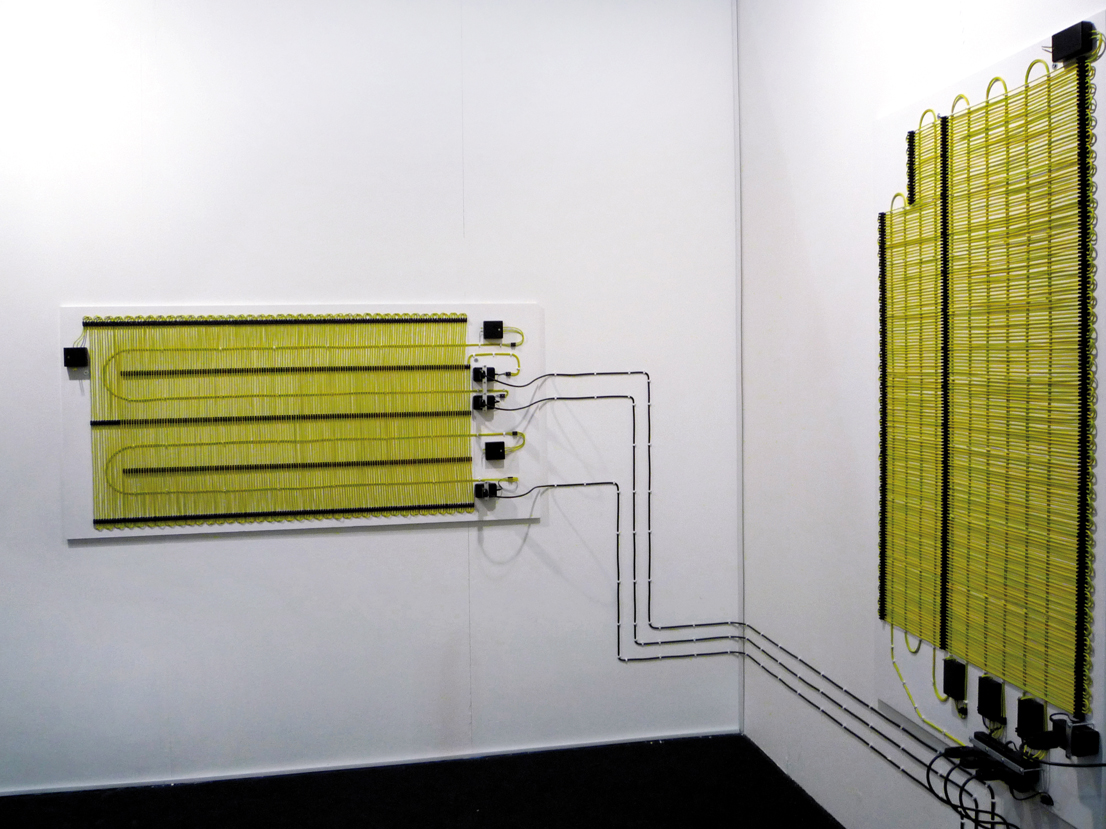
Alberto Tadiello, Farad, 2008. Courtesy: T293, Napoli.
Have you ever wondered why?
Yes, I think it is a sort of need of mine. When I go to the mountains and look around, I see the landscape that is organizing itself, reshaping itself, continuously finding a balance. It never stands still. Something like that happens in my work, too: I want it to move on its own, to wither, to burn itself out or continuously change, but I am not responsible for what happens, except to some very small extent.
So you are not the demiurge…
USB, Eprom, Farad are precisely functions, continuing operations, of systems of energy dispersal. They display wear, erosion, enervation.
You also have this approach in drawing: in the Untitled drawings of 2006 your intervention was subject to a condition of physical stress and handicap (painful tendinitis), or to the centrifugal force that disrupted the pen-compass-drill system with which they were made. In Total Solar Irradiance, 2008, did some external factor also influence or determine the outcome of the drawing?
In the first two series you mention the loss of control was quite evident, caused by a physical limitation or imposed by the methods with which I was working. In Total Solar Irradiance I copied the graphic output of software that measures solar radiation. They were pencil drawings on black paper, almost dusty works: I traced silvery dribbles and you had to find the right angle with respect to the paper in order to see them. I was interested in people’s gazes, forced to move inside these black rectangles in search of a tiny glow. I found a good way to hang them, without frames, with a minimum black border and glass I cut without grinding the edges. I left the edges visible and sharp, and they took on the clean look of a very rigorous, almost granitic, mineral slab. The wall itself became the frame, and this gave maximum visibility to the drawing. Here, the loss of control was intrinsic to the very idea of copying, by hand, something that by its nature has great mathematical precision.
I read an article written by Simone Menegoi to commemorate Max Neuhaus (Kaleidoskope 02 – summer 2009). I was particularly struck by certain passages. It talks about sound works and says that «Neuhaus never tired of emphasizing the distance that separated him from both music (to which he had devoted the first part of his life) and from other visual artists who, in his view, used sound in a way that was still “musical”, namely dynamic, temporal, not connected with space». The piece goes on to discuss his drawings, «an image joined by a handwritten text. This was the formula he had found to communicate his sound works at a distance, in time and space. How can you describe a work on the borderline between a space and sound, between the visible and the invisible? […] The drawing evoked, with a few lines, a path winding through trees, ascending. The text said only: In the / mountains / along / a footpath / one / encounters / a place / with an air / of another / density». The phrase suits you. I think it has a number of affinities with you and with your work: drawing, space, sound, time. So I’d like to pass the question on to you: how can you describe a work on the borderline between a space and sound, between the visible and the invisible?
That’s too hard!
We were talking about Total Solar Irradiance, shown together with 20 kHz in your solo show in Trieste at Studio Tommaseo for the Trieste Contemporanea Young European Artist prize of 2008. In that work, you came to terms for the first time with “composition”. While at first listen 20 kHz may seem close to the sounds produced by 9V or Switch (_01) and Switch (_02), it is actually something different, because it contained a series of high-pitched sounds you generated and then combined in a “suite” of 23 pieces. Is it correct to talk about pieces? What was the experience of composition like?
The Switches produced sounds that were much closer to pulsations than to high-pitched hisses. 9V was a real screech, it was extremely penetrating and irritating. Thanks to this work, I began to focus on all those high-frequency sounds that are propagated in space with a precise direction, with relatively acute angles of diffusion. These are frequencies that allow you to cut, pierce and probe space. 20 kHz is the threshold usually used to separate sounds from ultrasounds. It was a radical show. A choice. For the first time in an audio work, a compact block of only high-pitched squeals. I prepared the work almost entirely with a computer, in Paris. I stayed in the studio for a few weeks, working on these tracks so they would somehow be magnetic for the listener: extraordinarily expansive, dilated, minimal, evocative.
What fascinates you?
Nature. Many intuitions, starting points and processes that accompany the development of a work come from a series of observations of nature, in its most varied aspects: from the mountains to plants, atmospheric variations to animals.
Do you think these connections to nature are the reason behind the immediacy and freshness of your works, making them communicate so directly with viewers?
You can say that, I can’t tell. In my background, in the environment in which I grew up, art was always seen as something hard to explain.
Who is your viewer of reference?
My father. My dog. They are my figures of reference, because they are the toughest ones. My father was a mason, my grandfather was a mason, my great-grandfather and his father were also masons. My dad is the real test of my works. When he sees me in the studio he doesn’t ask questions, but with a few words, often in dialect, he lets me know if the work “hits home”. And that’s where things get complicated, because I always try to provide an initial, legible, even very simple visual level, though I may not always succeed. I often feel the need to trigger an immediate, direct satisfaction that then conceals and reveals further layers of more conceptual motives and meanings. I really make very few works and they take a very long time, because I need to let them distill. The ideas need to settle. I take something and I leave it there for months, I look at it again and it has to continue to interest me even later. Somehow, I think it has to stand up to me. I am my first, most severe critic, I always challenge the idea from different viewpoints. If this test of strength and time is passed, then I accept the idea, I decide to take it out and show it.
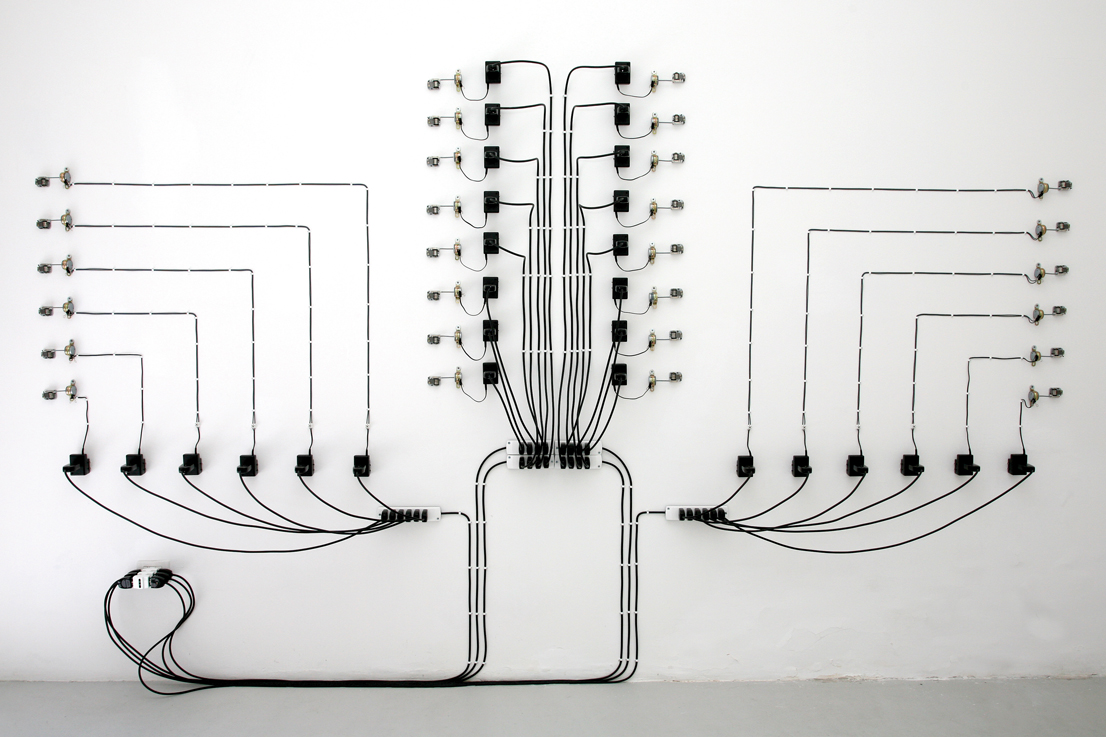
Alberto Tadiello, Eprom, 2008. Courtesy: T293, Napoli. Photo: Danilo Donzelli.
Your approach reflects a highly ethical vision of the making of an artwork. An attempt to erase distances and to re-emphasize the value of doing. Do you personally make all your works? In spite of your many commitments, you make a real effort not to delegate things to others…
That’s true. Sometimes I ask for help from a friend I have known for many years, and we work together on the preparation, assembly and installation of the work. As you say, for the moment I make a real effort to do everything on my own, though in the future I don’t know if that will be possible.
Speaking of installation, how important are the places in which you show your works? Your projects have never been site-specific, but you always pay a lot of attention to the surrounding space. I’m thinking about the various shadings assumed, for example, by the Eprom in relation to exhibition spaces and their different relationships with visitors: at the T293, for your solo show Erasable Programmable Read Only Memory, in May 2008, and at Fondazione Sandretto Re Rebaudengo, during T-Torino Triennial of Contemporary Art – 50 Moons of Saturn, November 2008.
I cannot completely overlook the space in which I insert the work. If you think about Shift you can immediately see what I mean. For the Premio Furla I had done a project for a small, compact, simple…
…if we can talk about simplicity…
…yes, well: let’s say variegated, but visually clean. When I then found myself with the idea of installing it in the space of Fondazione Querini Stampalia, I had to rethink it, which doesn’t mean disrupting it. It just means finding a possible solution so it can hold its own in the space.
In this case, its presence was sustained by persistent sound and the large presence of wires, sockets, circuits that invaded the space, like extensions of the circuitry inside the walls. A flood of electrical gear in the space of Fondazione Querini Stampalia that I saw as almost an occupation, taking possession of the space…
Shift holds its own because it extends itself, it distributes itself in the space. The wires form designs, tangle, they trace force lines that twist and rise, connecting in a point that is already behind the observer.
The image Shift suggested to me, when I saw it installed, was that of a clearing with vines, the underbrush of a jungle: once again, an image borrowed from nature. Was that just my impression, or was it part of your intentions, as happened for the botanical motif of the Eprom and USB?
Shift is a system in extension. It displays a circulatory system that is often closed inside walls. It gives sound to a flow, a movement, the tension of energy. It is a body, a tentacular organism, a parasite. As we were saying, nature is a constant source of suggestions, I watch it.
When do you realize that a work “stands up”?
When it stands up. It is like feeling a foothold when you are climbing. You sense the space, if it doesn’t work you feel it immediately. You look around, you observe and you can immediately tell if it works. If you are wrong, you fall. You can also study the space in layouts, models, photographs. You can imagine it, think about how to enter it, how to establish a relationship.
Have you ever fallen? Have you ever gotten to the end of an installation and realized that the foothold was no good?
The falling I’m talking about is not just a question of space. That’s not how it works. I don’t get to the end if I realize something is not right. I turn back sooner. There are ideas I think about, reflect on, things I try out. If I then realize they don’t work then they just remain there, as ideas, and never become anything definitive, complete. Let me tell you a story. A few years ago I found some pieces of a tree trunk, remnants lying on the ground, almost like a skeleton in the desert, a body sorely tested by time, neglect, weather. They had great expressive force, and I wanted to be able to capture that force and show it. I wanted to find a way to use them, to make that enigmatic force vibrate. So I dragged them up to the road, loaded them into my car and took them home. The wood contained many nests of giant ants: I drove 250 km in a car invaded by giant ants, almost three hours of travel in the company of these insects that crawled around, biting me on the arms, the neck, inside my trousers, on my ankles, between my legs… When I got home, as soon as I opened the car they rushed out and scattered with amazing speed, for three weeks I battled an army of ants in the house: in the cupboards, on the tiles in the bathroom, in the kitchen, everywhere. That was the start of a conflict between those pieces of wood and my actions, my thoughts, a sort of vicious circle to try to tame them, to possess them in order to use them, to shape them. I soaked the logs with liters and liters of alcohol, many times, and lit them on fire for a few moments. The more I tried to evict those insects, the more it all became crazy and absurd; an almost physical relationship, an addiction, was happening. I noticed that the ants usually came out at night, so for the first two weeks I would get up every two hours, with a flashlight, and soak the logs with alcohol. But I couldn’t figure out where all those efforts were leading. I thought I would reach a conclusion, but in the end I was left with nothing. I was blocked, I thought about them, watched them, dreamed of them… Now they are up in the attic at my house, wrapped in some old sheets, once in a while I pull back a corner and peek underneath. They are still very powerful.
Gorgeous. It makes me think about Giacomo Leopardi. This isn’t the first time he has come to mind in relation to your work. In his Discorso di un italiano sopra la poesia romantica, written in 1818 but not published until 1906, Leopardi wrote: «Nature does not exhibit but hides herself, so it is with a thousand ploys and almost tricks, a thousand devices and machines, that we must lay her bare, tormenting her, prying forth her secrets: but Nature, thus raped and laid bare, no longer grants us those delights she would previously have offered freely, of her own accord». And Leopardi was certainly aware of the words of Heraclitus: «Nature [Physis] loves to hide». In spite of your efforts, that invisible power remains intangible, impossible to translate. The invisible, on the other hand, was translated in USB, which you made for Fondazione Sandretto Re Rebaudengo in 2007.
Thanks!
We have talked about the relationship between your works and exhibition spaces. How do you relate, instead, to the more general surroundings? I ask this because in your work the relationships with the exhibition space are legible, but not those with the general context in which the space is located…
Yes, I think I am rather a-geographic. Of course there are different influences if I live in Paris or if I spend seven months in a hermitage on the Marmolada…
…but they are not directly legible in your work…
We all undergo influences all the time. There are books, cities, musical genres that make you say: «Well, I think I’ll stay here, because this feels like mine». At that point, you want to build something coherent around those atmospheres and suggestions.
What if we wanted to give names to those influences?
I can give you an example: Jean Baudrillard. When I began to study at the university I read practically everything by Baudrillard. In particular, I was amazed by America, which also opened up perspectives for me on Andy Warhol.
The things he wrote in Symbolic Exchange and Death about sex, death, the stockpiling of death, the anagram and the concept of security really influenced me. Lately I am often attracted by the writings of certain authors or philosophers. For example, I read Giorgio Agamben, who was also one of my teachers at the university. I think some of the things he writes are very strong: they manage to be contemporary, political and incisive, but without forgetting the teachings of theology, of medieval theosophy, of the classics. His writings, while investigating very specific aspects of reality (as in the case of The Coming Community, for example), never cease to surprise me for their clarity and lucidity, their beauty and depth of analysis.
Let’s go back to cities, for a moment. From Chiampo, in the province of Vicenza, to the foothills of the Little Dolomites, you went first to Venice, then to Milan for a residency at Viafarini, and then to Paris for the residency of the Dena Foundation for Contemporary Art at the Centre International d’Accueil et d’Echanges des Récollets. On to New York, and finally you will be in London for a residency at Gasworks, part of the Premio Furla. But you have set up your studio at Chiampo. Why did you make this choice? And what about your experiences in Milan and Paris? What do you expect from the trips to New York and London?
What I have in Chiampo is not a studio. It is just a space where I have always studied, during my years at the university, and now it is a place where I can work on my own. It’s a room. Milan and Paris were two different experiences, both of them good. New York and London? I’m sure they will be even better… I’m an incurable optimist!
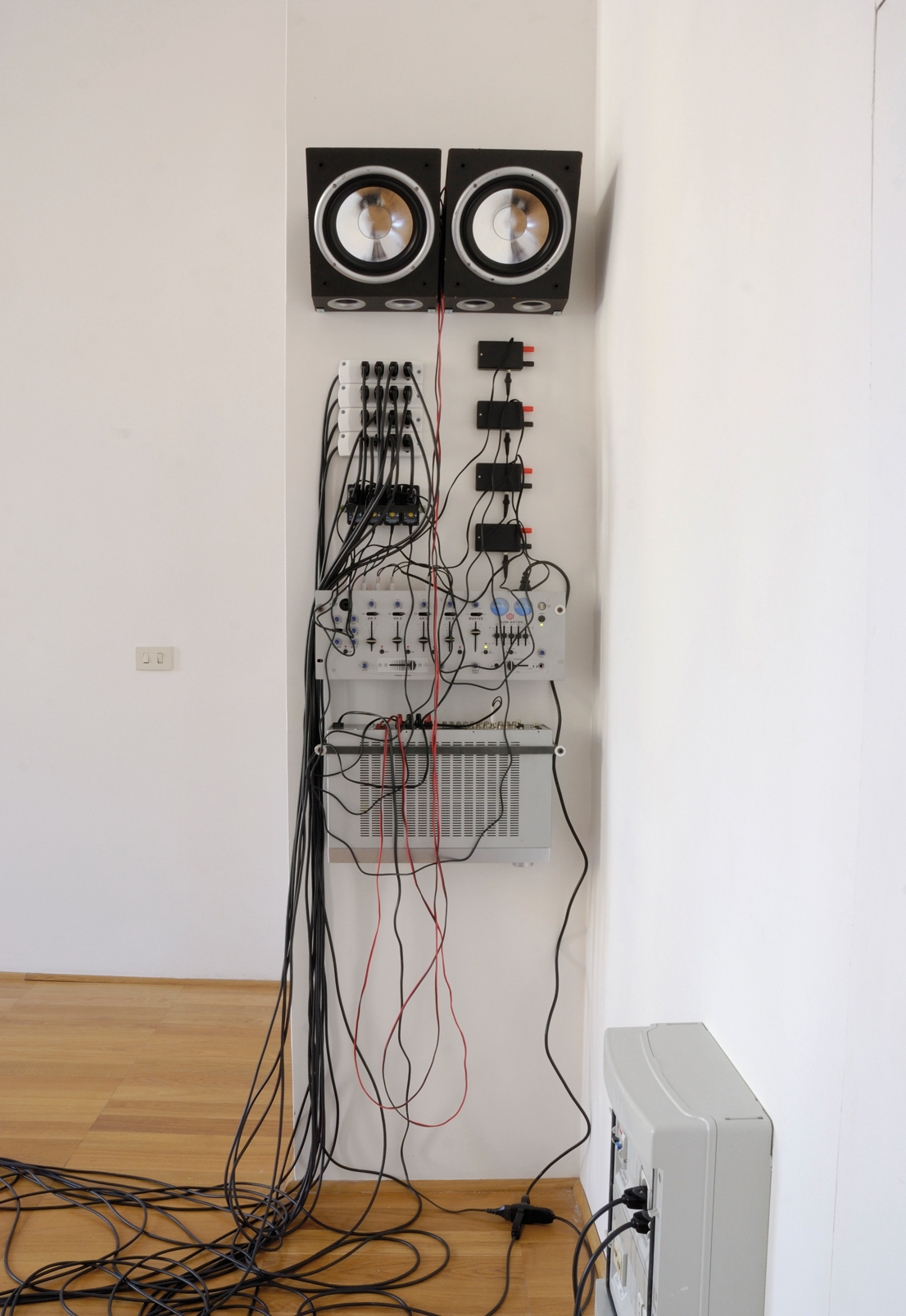
Alberto Tadiello, Shift, 2009. Courtesy: Fondazione Furla, Bologna. Photo: Andrea Avezzù.
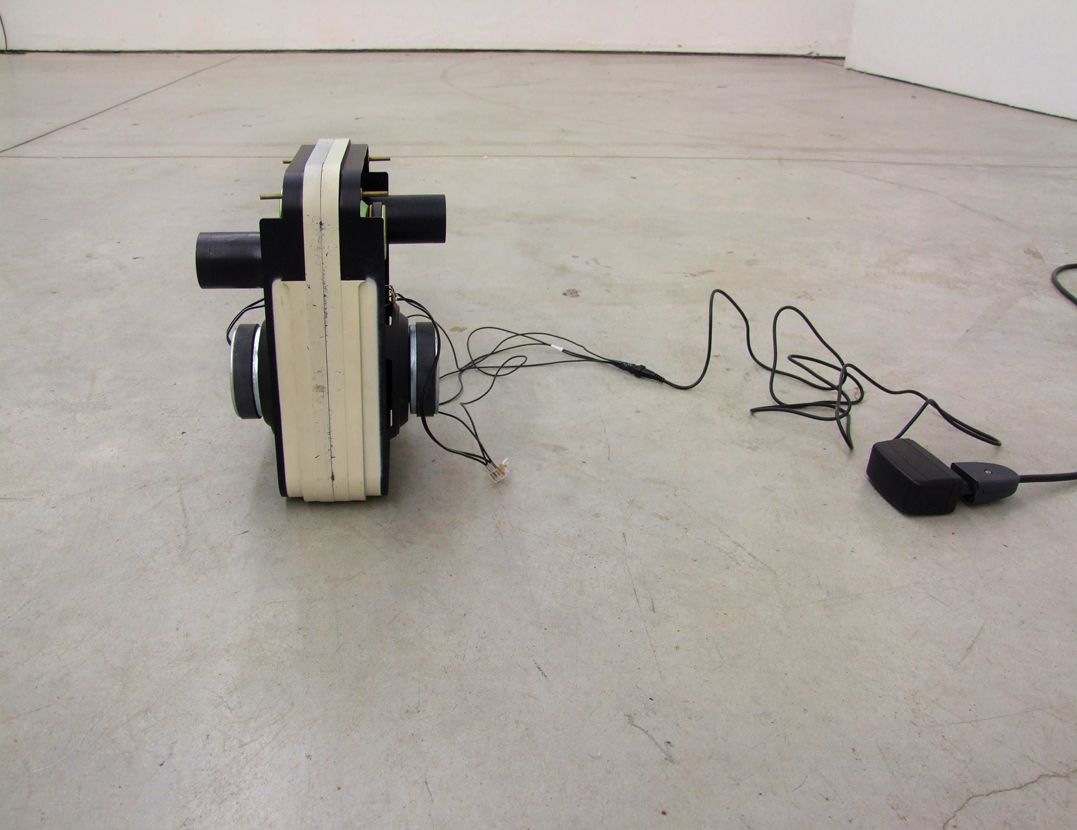
Alberto Tadiello, Switch, 2008. Courtesy: T293, Napoli.
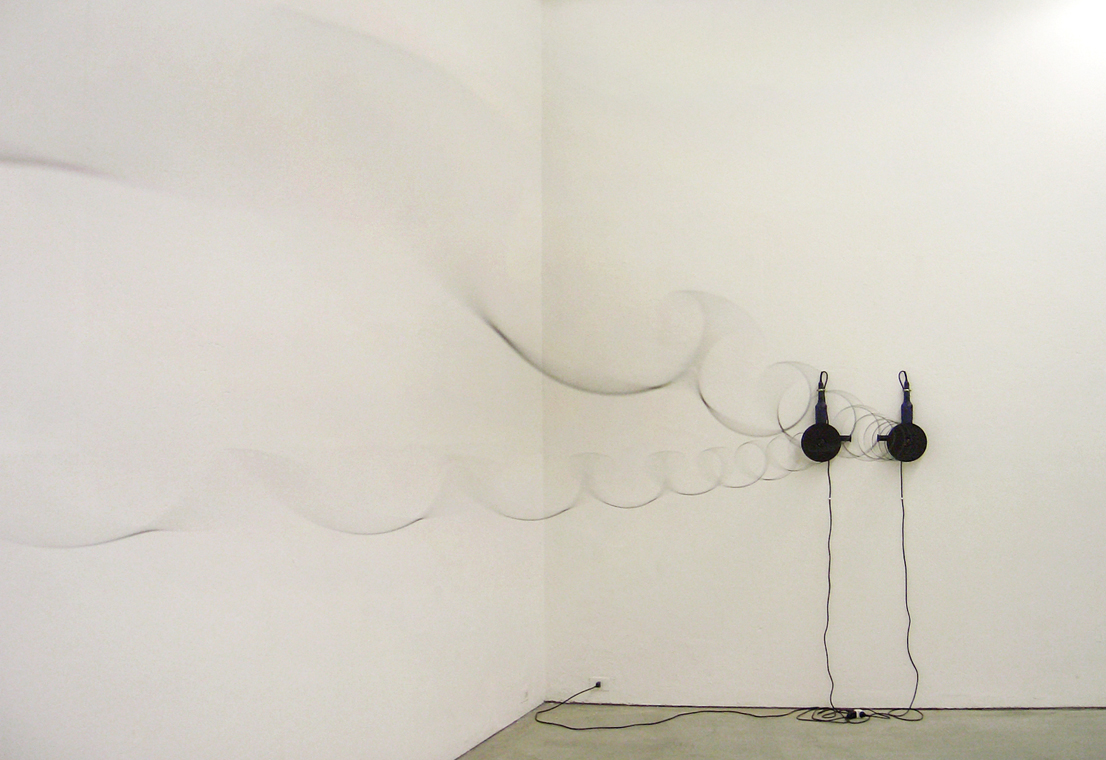
Alberto Tadiello, PWS 1200 IPC KH3116, 2008. Courtesy: T293, Napoli